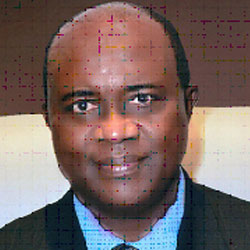Problems of Splits in Polyurethane Foams Manufacturing Processes
Expert: Dr. Bernard E. Obi
Webinar Length: ~100 Min
Language: English
Category: Polyurethanes & Foams
Webinar ID: KH0425
Buffet Program: No
Weekend Program: No
Brochure: No
Available on Demand : Yes
Format: Recorded
Registration Fee:
Public Schedule (WeekDay)
Member: 150 US$
Non-Member: 250 US$
Group (5 Pax): 600 US$
Public Schedule (WeekEnd)
Member: 180 US$
Non-Member: 300 US$
Group (5 Pax): 720 US$
Custom Schedule
Member: 225 US$
Non-Member: 375 US$
Group (5 Pax): 900 US$
To Register:
Registration Form
Description:
Polyurethane (PU) foams boost a wide micro and macro morphological properties space which enable its use in a wide swath of applications areas. On the one extreme are the hard and brittle closed fine celled rigid PU foams which are used in a variety of heat management (insulations) applications. On the other extreme are soft open celled flexible PU foams which are used in a variety of comfort applications involving seating, bedding and cushioning. A variety of processes are used to produce these various types of polyurethane foams. Rigid polyurethane foams are typically mostly produced by molding processes, although there are some spray applications as well. Flexible polyurethane foams use a wider variety of applications technologies. The slab-stock foams are typically produced by pouring and reacting mixture on a conveyor system on which a very large bun grows as the foaming system is conveyed down the line. Similarly some viscoelastic or memory foams, as well as some high resiliency (HR) foams used for bedding applications are also produced on conveyor systems. On the other hand, a significant portion of both HR and Viscoelastic foams particularly those used for seating, cushioning and other specialized applications are produced by molding processes.
All these types of polyurethane foams can undergo SPLITS (tearing) during or shortly after the manufacturing process. Foam splits result in poor foam performance in their various applications and therefore highly undesirable. In rigid foam used for insulation applications, foam splits result in significant deterioration of the insulating property. For flexible foams, splits result in poor durability and load bearing and comfort properties. The root cause of splits in polyurethane foams and how to eliminate them in the production of these foams will be addressed in this Webinar.
Expert:

Dr. Bernard E. Obi is a retired dynamic polymers/materials scientist with extensive expertise in cellular materials in general; but particularly in polyurethane foams processes and applications. He has extensive expertise in both rigid and flexible polyurethane foams. Within the flexible PU foams space, the expertise encompass high resiliency (HR), slab-stock and viscoelastic or memory foams. He earned a Ph.D. in chemical engineering and worked for The Dow Chemical Company from July 1985 to July 2015. Apart from polyurethanes technology; he also has significant expertise in free radical dispersion/suspension polymerization, surface and interfacial science, micro & macro-structure-property-performance relationships, materials development, composites, elastomers and rubbers. He authored a text book on Polymeric Foams Published December 7th 2017 by Elsevier Publishers. Dr. Obi operates his consulting company (PolyFoam Consulting LLC) out of the Houston area in Texas USA, and is engaged in providing consulting services to the polymeric foams industries and businesses.
Available Webinars by Expert:
Contact for Assistance :
THAILAND
Tel: +66-89-489 0525
Email: peram.technobiz@gmail.com
WhatsApp/WeChat: +66-89-489 0525 (messages only)
USA
Tel: +1-856-981 4381
Contact Address
KnowHow Webinars
TechnoBiz Communications Co., Ltd
2521/27, Lardprao Road, Khlongchaokhunsingha
Wangthonglang, Bangkok 10310 THAILAND
Tel: +66-2-933 0077 Fax: +66-2-955 9971
WhatsApp: +66-89-489 0525


